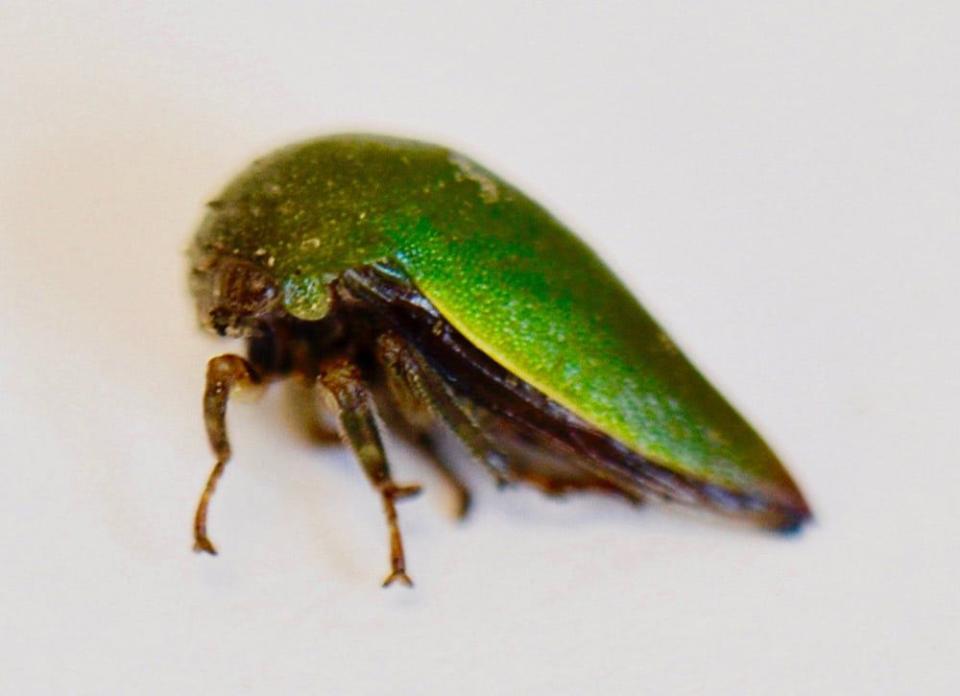This Toddler Discovered a New Bug Species While Gardening with Her Mother
Anyone who has gardened with small children knows it seldom goes as planned. But as one Kentucky mom found out, that can be a great thing—especially when it leads to the discovery of a new species of insect.
Three years ago, Dr. Laura Sullivan-Beckers asked her 2-year-old daughter, Sylvie, to help her plant wildflowers in the garden. She placed the seeds and let Sylvie water the flower bed. Her daughter took her job very seriously and ended up overwatering.

Image courtesy of Laura Sullivan-Beckers.
Once all the water soaked into the soil, Laura noticed bright green treehoppers had floated to the surface of the flooded bed. She happens to be an assistant professor of biology at Murray State University, and, although she specializes in studying spiders, she knew seeing treehoppers in her garden bed was abnormal. Treehoppers are normally found high up in trees. She snapped a few photos and sent them to her Ph.D. advisor for a second opinion.
From there, she was put in contact with the USDA. Upon further research, it turned out that Laura and Sylvie had actually discovered a species unknown to science. In early August, Laura officially co-published the name and description of the new species in a scientific journal.

Laura Sullivan-Beckers and five-year-old daughter, Sylvie. Image courtesy of Murray State University.
Because Sylvie’s overwatering led to the original discovery, Laura named the new species of treehopper Hebetica sylviae, after her now 5-year-old daughter. Not much is known about the species because only dead specimens were found in her garden. However, Laura also found wasp larvae in the bed with the treehoppers, so she believes that the treehoppers were the prey of wasps, and they were buried in the soil by wasps to feed their larvae.
Once they are able to find live specimens of this species (which Laura believes reside high up in a nearby 60-foot oak tree), scientists will be able to make more strides in researching Hebetica sylviae. For now, we applaud this mother-daughter duo for their discovery, made while experiencing the wonders of nature together in their backyard garden!

